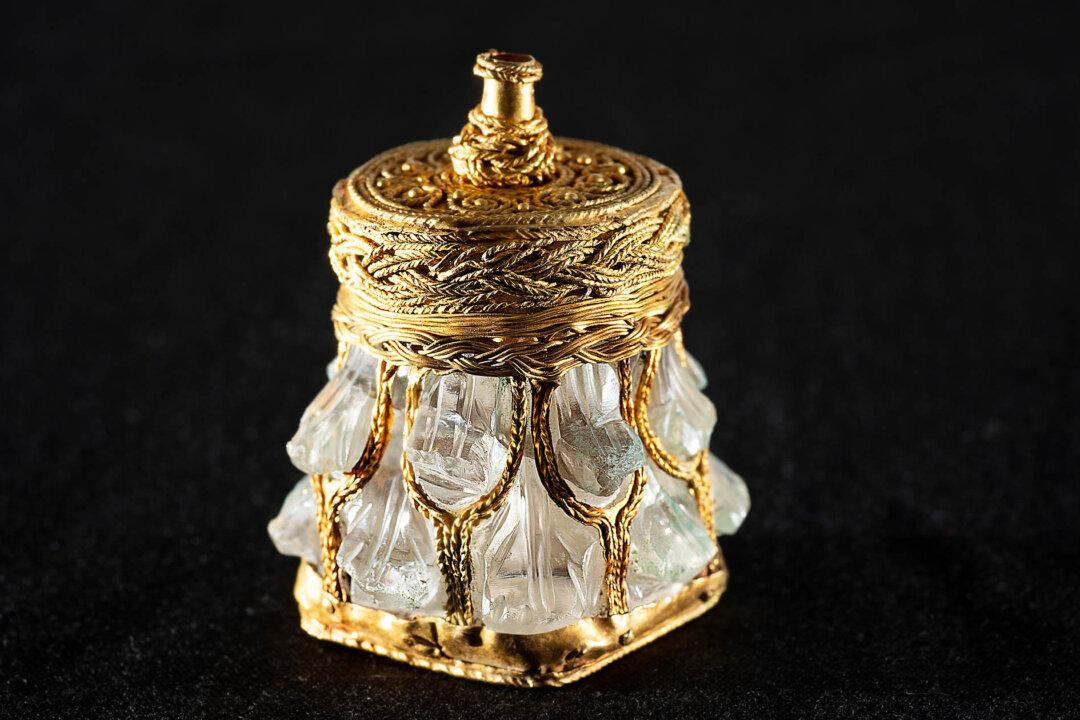Nearly nine years after a metal detectorist in Scotland first stumbled on the largest hoard of Viking-age treasure ever unearthed in Britain or Ireland, its contents continue to yield new discoveries in the hands of researchers.
The Galloway Hoard, found in 2014 by one Derrick McLennan from Ayrshire, consists of over 100 gold, silver, crystal, stone, glass, and earthen objects from the Viking age (a period from around A.D. 800 to 1050). In this trove, consisting of objects from as far away as the Middle East and Central Asia, was found a mysterious clump of wrapped, extremely fragile and rarely surviving textiles, through which could only partially be observed an object made of rock crystal and gold.






